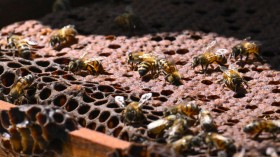A fungal disease that is sapping the strength from white pines in southern Maine is growing worse, spreading more rapidly and leading to the mass destruction of these once-towering trees.
The fungus (or various fungi), commonly called white pine needle disease, has reportedly reached "epidemic proportions," officials from the Mine Forest Service (MFS) told the Portland Press Herald.
According to the local paper, forest landowners are already reporting the worst of the disease is affecting plots of white pines in southern Maine, especially in York, Cumberland and southern Oxford counties, where adequately sandy soils have previously allowed for white pines to flourish.
The spread of disease among weakening pines could prove disastrous for Maine, where white pines make forest owners an estimated $31 million a year, according to reports from the North East State Forester Association.
The MFS has yet to come up with an estimate of existing and projected damages to the region's white pines, but an investigation is in the works, according to local reports.
Tom Doak, the executive director of the Small Woodland Owner's Association in Augusta, which represents about 5,000 woodlot operations in the state, told the Herald that commercial growers and woodlot owners should be concerned, especially if this year's spread is worst than past seasons.
"The pine is a very valuable tree in Maine," he said. "Maine is the Number One white pine-producing state. It is a significant tree and ... it takes a very long time to grow."
Past forestry reports have shown that Maine's white pines have been suffering from various fungal diseases over the last few years, with infections in 2011 paving the way for dead needles to carry diseases into the following year.
According to the reports, a gradual change to higher precipitation in the summer months may be contributing to this ongoing problem.
"During the past several years, an increased incidence and severity of needle casts has been observed, probably as a result of the excessively wet seasons of late," one report concluded.
Adequate spacing can help prevent the spread of fungal diseases through the rapid drying of needles, but the MFS explains that "management options are limited and... in very wet years this may be of little help."
© 2024 NatureWorldNews.com All rights reserved. Do not reproduce without permission.





